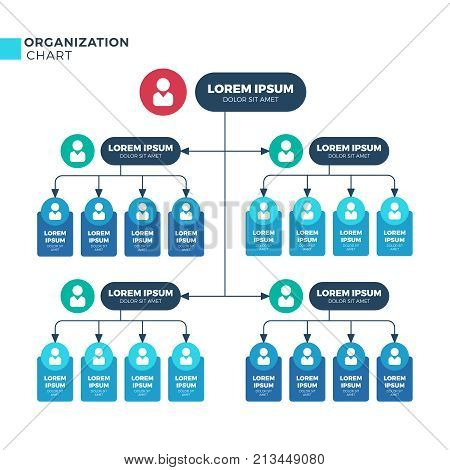

Sex disaggregation is strengthened in the 2020 HCI. In the 2020 version, the HCI can be calculated separately for boys and girls for 153 of the 174 countries included in the index, compared with 126 of 157 countries in the 2018 index. A holistic difference between physical and human capital development of society is only said to occur when the material wealth is complemented by cultural, social and educational achievements. One of the most important benefits of education is that it helps to meet the objectives of life.
According to early HCI-based simulations, in low-income countries, young children can expect their human capital to be about 1 percent lower than it would have been in the absence of COVID-19. The services sector, in this backdrop, is proving a significant contributor to the growth of economy. This knowledge hub has attracted large investments from several countries. The emphasis of government on technical education also highlights the commitment to drive excellence in areas of research and manufacturing. Education arms individuals with the knowledge of their rights and duties. It is informed citizenry which forms the base for the development of any society.
A typical country at that time could still show a loss in its HCI of almost 1 full HCI point (0.01) due to COVID-19. Lack of sex-disaggregated test score data prevents this in the remaining countries. Education not only provides an opportunity for development in numerous spheres but also contributes to the standard of living. Along with driving self-sufficiency, education provides awareness. This awareness about the rights creates responsible citizens and responsible citizens can demand responsible and accountable governance.
What is the role of education in human life?
It is thus the process of adding value to individuals, teams or an organization as a human system.’ Accordingly, higher education and training are the major source of improving human resource. Every society needs to reform the systems to meet some specific needs. Education is an overall process of not only personal growth but also an enriching growth of society and nation. It is the foundation of development of any nation. Educated youth have the ability to think beyond their stagnating lives and contribute to the development of their societies.
What is physical capital vs human capital?
What exactly is the difference between physical capital and human capital? Physical capital refers to tangible assets that assist in the production of a good. This includes machinery, buildings, transportation, computers, and software. Human capital refers to the economic value of an employee's skill set.
Why this pairing works – Human development is inherently linked with education. It requires the ongoing learning of several disciplines as they pertain to each person and their individual case. If you’re a lifelong learner, this field offers a wonderful arena to continue your research and study regardless of what field you decide to pursue. This employment generation goes a long way in raising the quality of life of several families. It is, thus, a positive spread effect which becomes possible from the seeds of education.
More General Knowledge Questions
A human being is now not seen as a resource/labour, but rather is seen as an asset or capital. Remember what we mentioned in the beginning – capital is also one of the four factors of production. Labour refers to the human resources employed by an organisation, including skilled and unskilled workers. The third component is physical capital constituting of assets employed by an organisation. Physical capital refers to assets, such as building, machinery, and vehicles, which are owned and employed by an organisation. Physical capital constitutes one of the factors of production other than land and labour.
Further, the poorest countries of the world are in the tropics, an area rife with tropical disease. Human capital is a term that denotes the economic value of the knowledge, skills, and competencies of a person. Thus because of both the intrinsic value and instrumental value of human capital, the government should actively involve itself in this arena. Expenditures on education and health make a substantial long-term impact andthey cannot be easily reversed, so government intervention is necessary. Since education and health create both private and social benefits, both private and public institutions are needed in these fields.
Therefore, the government should increase allocation for higher education and also improve the standard of higher education institutions, so that students are imparted employable skills in such institutions. Moreover, the level of unemployment among educated youth is the highest. Elementary education takes a major share of total education expenditure and the share of the higher/tertiary education is the least. Though, on an average, the government spends less on tertiary education, ‘expenditure per student’ in tertiary education is higher than that of elementary. Moreover, a substantial section of our people cannot afford to reach super specialty health care and higher education. Likewise, e-governance is being projected as the way of the future.
Class 8
The value of the physical capital is impacted by any organisational changes, such as a demerger of the undertaking or a merger with another company. The manufacturing procedure can not be broken up to be sold, and some facilities are specifically designed for specific products. If there is any sale, it has to be constructed of the whole undertaking. Since it is meant to be depreciable, a company can charge depreciation costs on the assets.
Why is physical capital distinguished from human capital?
physical capital refers to equipment and machinery, whereas human capital refers to trained people.
Next, I turn to a recent paper by Acemoglu and Johnson who examine, in a cross-national panel, improvements in health technology in the 20th century. They find that decreases in mortality were followed by increases in population and concomitant decreases in GDP per capita. For a country like India, with a one-time huge opportunity of demographic dividend, it’s high time to focus on human capital. Whereas human development considershuman beings as ends in themselves and thus education, health etc. as their rights. Physical capital is part of the overall organisation.
TaxCloud (Direct Tax Software)
There are many fascinating detours into biological mechanisms that I could take, but the focus is instead on economic outcomes, viewed through the lens of economics. Fourth, this review considers the response of income to a given improvement in health, but not how to optimally design health programs. Physical capital is tangible whereas human capital is intangible. Very Informative article on Human Capital one must go with detailed study to utilize our Indian Human resources. Individual consumers of these services do not have complete information about the quality of services and their costs. This may create monopoly power and exploitation by private players if adequate government regulation is not present.
- Our experts suggest the best funds and you can get high returns by investing directly or through SIP.
- This capital may consist of liquid assets like cash and receivables and fixed assets like real estate or land.
- Investments in both of these capitals lead to fundamental improvements in a business and better chances of achieving long-term goals.
- Higher Education therefore is expected to play an important and increasing role in the development of Human Capital of a nation.
- Moreover, the level of unemployment among educated youth is the highest.
The broader concept of “Financial Capital” refers to what is necessary to sell products and services. Investors often face debt and equity as two types of Financial Capital. Measuring it might reveal both issues or a possible improvement. The phrase “Financial Capital” suggests that the capital is worth money. 24 years old Early Childhood (Pre-Primary School) Teacher Charlie from Cold Lake, has several hobbies and interests including music-keyboard, forex, investment, bitcoin, cryptocurrency and butterfly watching. Is quite excited in particular about touring Durham Castle and Cathedral.
The success of any nation in terms of human development is largely dependent upon the physical and human capital stock. In another report it explains internationalism in higher education as a component of globalization. The OECD believes that internationalism should be seen as an imperative in 21st Century capitalism.
Human Capital Formation in India-Important Questions
A substantial part of the human capital formation takes place in one’s life when she/he is unable to decide whether it would maximize her/his earnings. How does the Human Capital Index differ from UNDP’s Human Development Index ? These constraints need to be addressed for all people to be able to reap the returns to human capital investment. Education gives a level of confidence which capacitates individuals to compete globally and assert themselves.
Beginning in October 2020, the HCI country briefs include a range of carefully selected complementary indicators that present the HCI in a broader regional and country human capital perspective. For human capital, as in all areas of development data, the World Bank Group is engaging closely with member countries to help build capacity and improve data quality. Human capital theory is the most influential economic theory of western education, setting the framework of government policies since the early 1960s.
Since it cannot be documented on a company’s balance sheet, it is an intangible asset or quality. It is believed that investing in human capital will boost profitability and productivity. The economic worth of a worker’s experience and talents is human capital.

What are the various activities which are classified into three main sectors? Explain any three factors on which the quality of the population depends. Listen NCERT Audio Books to boost your productivity and retention power by 2X.
Human capital is not perfectly mobile between countries as movement is restricted by nationality and culture. Firms will, thus, insist that the workers should work for a specific period of time, after their on-the-job training, during which it can recover the benefits of the enhanced productivity owing to the training. A disproportionate share of these are low-income countries, emphasizing the need to continue to invest in better data systems. Subnational disaggregation of the HCI data has been done for over 20 countries and can be calculated at any subnational level with relevant representative data.
The material and information contained herein is for general information purposes only. Consult a professional before relying on the information to make any legal, financial or business decisions. Khatabook will not be liable for any false, inaccurate or incomplete information present on the website. A teacher or government employee is likely to have unwavering job security and a predictable income stream for the duration of their career.
What is physical capital vs human capital?
What exactly is the difference between physical capital and human capital? Physical capital refers to tangible assets that assist in the production of a good. This includes machinery, buildings, transportation, computers, and software. Human capital refers to the economic value of an employee's skill set.